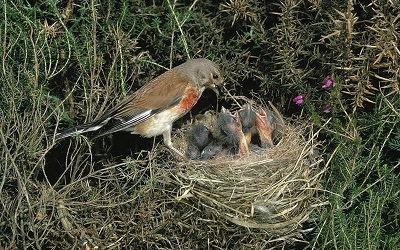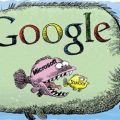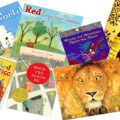PTE考生目前最大的问题之一就是练习题缺乏。除了有限的基本官方书(PLUS,Testbuilder, OG)之外就没有题了。很多英语基础不是很扎实的同学很难找到练习材料。悉尼文波雅思PTE培训学校专门为澳洲,尤其是悉尼、墨尔本的PTE考生准备了适合PTE听力阅读练习的科学60秒。各位PTE同学可以练习PTE听力中的summarise spoken text和PTE口语中的retell lecture,PTE听力口语-科学60秒-Frosty Moss练习记笔记技巧和复述。废话少说,下面开始:
听力内容:
60秒科学节目(SSS)是科学美国人网站的一套广播栏目,英文名称:Scientific American – 60 Second Science,节目内容以科学报道为主,节目仅一分钟的时间,主要对当今的科学技术新发展作以简明、通俗的介绍,对于科学的发展如何影响人们的生活环境、健康状况及科学技术,提供了大量简明易懂的阐释。
This is Scientific American — 60-Second Science. I’mJason Goldman.
Got a minute?
More than half of U.S. households provide food forbirds. It’s a billion dollar industry. Now a study askswhether the same feeders that attract birds alsoattract predators that eat the eggs and newlyhatched nestlings of those birds.
“We imagined that the food resource on the landscape could have a couple different effects onrelationships between nest predators and their prey.” Ohio State University researcher JenniferMalpass.
“On the one hand, you could see that the food might be attracting predators to certain areas, and that could increase nest predation risk. However, predators may be exploiting these foodresources, and if you’ve got a good, predictable food resource on the landscape that’s easy forpredators to access, you could imagine that they could switch to those anthropogenic, or thosehuman-provided foods, like bird feeders. And that could perhaps lessen nest predation risk.”
Which could also be a problem, because predators help control the population.
Malpass and her team looked at the nests of American robins and Northern Cardinals in sevenOhio neighborhoods. They noted the presence or absence of feeders and recorded potentialnest predators, like squirrels, domestic cats, and other birds. Over the four-year study, theyobserved more than 15,000 day-active predators across 19 species, but only brown-headedcowbirds and American crows were associated with bird feeders. The results were published inthe journal The Condor.
The survival of Northern Cardinal nestlings did not seem to be related to the presence ofthese nest predators or even to bird feeders. But the American robins tell a different story.
“In areas that had both many crows and many bird feeders, American robin nest survival wasthe lowest.”
So the effect of bird feeders on urban wildlife communities differs from species to species, neighborhood to neighborhood.
“At least some predators seem to be attracted by bird feeders and the food resource theyprovide, and in some cases this can lead to increased nest predation risk for native backyardbreeding birds.”
But that doesn’t necessarily mean that we should get rid of all the bird feeders.
“There are some great ecological and social benefits from this practice. We see them asnature’s ambassadors. They’re a point of connection to nature and the outside world and ournative wildlife.”
Homeowners have been feeding wild birds for a long time, but only now are scientists finallybeginning to understand just how that affects urban ecosystems. And the upshot, of course, is: it’s complicated.
Thanks for the minute for Scientific American — 60-Second Science Science. I’m JasonGoldman.
墨尔本悉尼文波PTE原创首发
更多精彩请持续关注wenbo_tv3。





